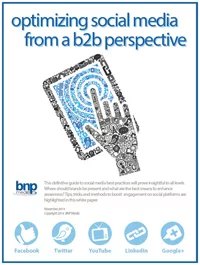Benvenuto a Torino
The visitor profile was expected to be somewhat the same as last year with ~40% attendance from paint manufacturers; the remainder of attendees were from the ink and adhesive markets as well as raw material manufacturers. There are approximately 3,000 paint manufacturers in Western Europe. The majority (~75%) of these companies are small. Italy alone has nearly 700 paint producers and the vast majority are independent. Only 14% are subsidiaries.
This year’s event had “Innovation” as its theme, and it was clear from the show floor that exhibitors are focusing on environmentally safe solutions and materials. Regulations are rather severe within the European Union and have a significant impact on colorants and the paint industry in general. There was a definite focus on waterborne, powder and UV as well as software to help in these areas.
Powder coating raw materials were a predominant player at the show, which is no surprise as Italy is the market leader in powder. UV curing technologies are also receiving heavy attention and some believe the future of UV is in urethane acrylic technology. Undoubtedly this is because of the durability for outside application that is attainable using urethane acrylics.
There is a bit of nervousness within the European coating community right now regarding continued prosperity. The euro is at an all-time low and that, coupled with rising oil prices, has the chemical community in general quite uneasy. Obviously, this impacts the raw material suppliers and, therefore, paint manufacturers. They might be able to withstand either the drop in the euro or the rise in oil prices, but both at the same time bodes difficult times ahead. This, of course, will ultimately affect the global coating business and not just Europe.
The continued trend of restructuring by way of mergers and acquisitions is also still on the forefront and gives the smaller companies cause for concern. The driving forces in Europe are the same as in the United States — increasing shareholder value and globalization.
The FATIPEC Congress presented a number of very good papers spread out over a four-day venue. There were plenary lectures each day and the Congress papers were focused on the following topics: general industrial coatings, house and building coatings, restoration of artistic and historical objects, protective and marine coatings, raw materials, automotive and transportation coatings, adhesives and printing ink, and test methods and quality control. I was particularly pleased to see attention given to both testing and characterization methods, as this important function is often overlooked and actually represents one of the most important, if not the most important, task we perform in coatings. Bad testing data affects suppliers as well as paint manufacturers. The ultimate impact of course is often felt by the applicator or the end user.
The four papers that won awards were: “The Influence of Weathering on Scratches and the Scratch and Mar Resistance of Automotive Coatings,” “Structure Properties Relationships in Polyurethane and Polyurethaneacrylic Dispersions for Coatings Applications,” “Onepack Crosslinking Acrylic Dispersions for Industrial Wood Coatings,” and “Antigraffiti Protection of Porous Building Materials.”
The technical Congress featured something new this year — a technical marketing meeting session. The idea was to bring marketers together and discuss the future technology trends and their link to legislation changes and then try to discuss subsequent strategies. People from the raw material supplier community, market research and legislative fields were invited to participate. This was very well attended and discussions of this type for marketing managers should be encouraged.
The Congress does attract a large international audience as the member countries represent a large sector of the continent. This is an added value for the Eurocoat show sponsors, as the Congress attendees who are for the most part research and development scientists do visit the exposition.
Looking for a reprint of this article?
From high-res PDFs to custom plaques, order your copy today!






